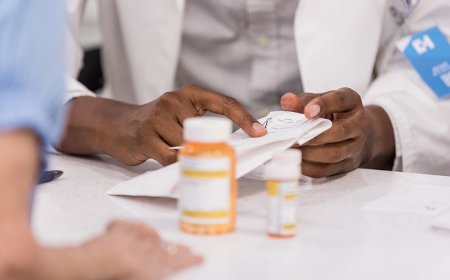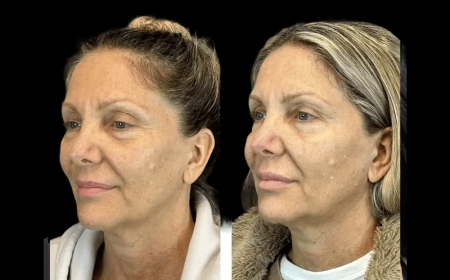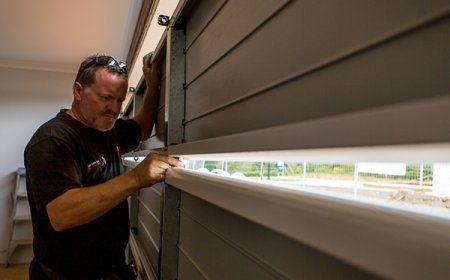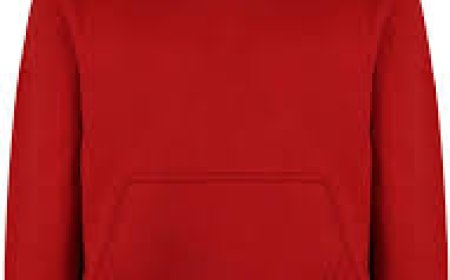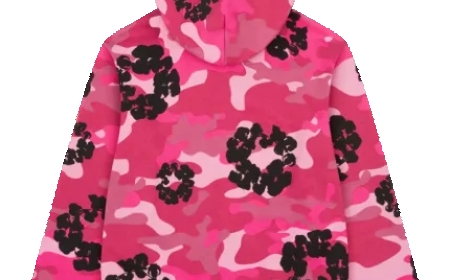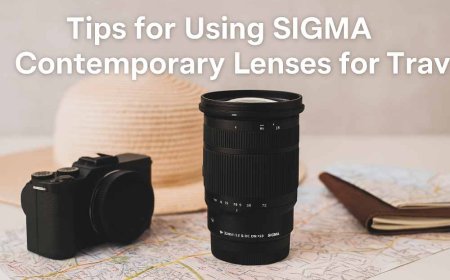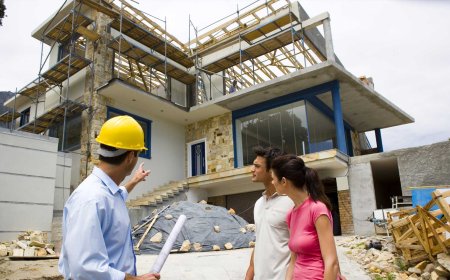Top 10 Las Vegas Spots for Street Photography
Top 10 Las Vegas Spots for Street Photography You Can Trust Las Vegas is more than just neon lights, slot machines, and showgirls. Beneath the glitz and the amplified energy of the Strip lies a city rich with raw human stories, unexpected textures, and fleeting moments that beg to be captured. For street photographers, Las Vegas is a paradox — a place where spectacle and solitude coexist, where th
Top 10 Las Vegas Spots for Street Photography You Can Trust
Las Vegas is more than just neon lights, slot machines, and showgirls. Beneath the glitz and the amplified energy of the Strip lies a city rich with raw human stories, unexpected textures, and fleeting moments that beg to be captured. For street photographers, Las Vegas is a paradox — a place where spectacle and solitude coexist, where the artificial feels real and the real feels surreal. But not every corner of the city is equally welcoming to the lens. Some areas are over-policed, others are too staged, and a few are simply unsafe or off-limits. That’s why trust matters. This guide isn’t just a list of photogenic locations — it’s a curated selection of the top 10 Las Vegas spots for street photography you can trust. These are places where the light is golden, the subjects are authentic, and the atmosphere invites candid storytelling without the risk of confrontation, legal trouble, or missed opportunities.
Why Trust Matters
Street photography is not just about capturing beautiful images — it’s about capturing truth. And truth requires safety, accessibility, and respect. In Las Vegas, where tourism is the lifeblood and security is omnipresent, photographers often face challenges that don’t exist in other urban environments. You might be asked to stop shooting by private security, fined for using a tripod on public sidewalks, or even detained if you’re perceived as a threat near casinos or government buildings. Trust, in this context, means knowing where you can legally and safely operate without fear of interference, where subjects are accustomed to being photographed, and where the environment itself enhances — rather than hinders — your creative process.
Trusted spots are those with clear public access, low risk of harassment, and a natural rhythm that allows for unobtrusive observation. They are places where locals and tourists alike are either indifferent to cameras or actively engaged in their own narratives — making your job easier. These locations have been tested by professional street photographers over years, validated through community feedback, and confirmed by legal precedent. This guide prioritizes locations where you can focus on your art, not your legal standing.
Moreover, trust extends to the quality of light, the diversity of subjects, and the layering of visual elements — architecture, signage, shadows, and motion. The best street photography locations in Las Vegas aren’t necessarily the most famous. They’re the ones where the city breathes quietly beneath the noise. This guide reveals those places.
Top 10 Las Vegas Spots for Street Photography You Can Trust
1. Fremont Street Experience — The Neon Heartbeat
Fremont Street, the original pulsing artery of Las Vegas, remains the most reliable location for street photography in the city. Unlike the Strip, which is dominated by corporate branding and uniformed staff, Fremont Street retains a gritty, unfiltered authenticity. The canopy of LED lights overhead transforms every evening into a living art installation, casting dynamic colors on the faces of performers, gamblers, tourists, and homeless residents who coexist in a fragile, fascinating harmony.
Photographers can shoot from the pedestrian mall without restriction — no permits required for handheld photography. The crowd is dense and diverse: vintage Vegas dancers in sequins, street musicians playing saxophone under the glow of neon, families snapping selfies with giant dollar signs, and elderly men staring blankly at slot machines that haven’t paid out in hours. The contrast between the glittering canopy and the worn-out expressions below creates powerful visual tension.
Best times to shoot: Golden hour (just after sunset) and 10 PM to 2 AM, when the lights are brightest and the crowds are most expressive. Use a fast lens (f/1.8 or wider) to capture motion in low light. Avoid the center of the mall during major events — the crowds become too dense for movement. Stick to the side alleys and the entrances to the old casinos like The Golden Nugget and The Four Queens for candid, intimate moments.
2. The Arts District — Raw, Real, and Unfiltered
Just three miles east of the Strip, the Arts District (also known as the 18B neighborhood) is where Las Vegas sheds its tourist skin. This is the city’s creative soul — a patchwork of warehouses turned galleries, independent coffee shops, murals that change weekly, and residents who live here because they refuse to be part of the spectacle.
Here, street photography is not just permitted — it’s welcomed. Local artists often invite photographers to document their work. The murals are vast, colorful, and layered with social commentary. You’ll find graffiti artists at work, jazz musicians playing on street corners, and elderly residents sitting on stoops watching the world pass by. The lighting is natural and forgiving, especially in the late afternoon when the sun slants across the brick facades.
Key spots: The corner of 18th and Bonneville for the iconic “Vegas Is My Home” mural, the alley behind the Neon Museum’s annex for abstract shadows, and the patio of The Griffin for candid portraits of artists and patrons. Bring a 35mm or 50mm lens to stay mobile and unobtrusive. The community here is tight-knit; a smile and a nod go further than any permit.
3. The Neon Museum — A Cemetery of Light
Don’t mistake this for a typical museum. The Neon Museum is an open-air archive of decommissioned Vegas signs — a hauntingly beautiful graveyard of once-bright icons. The signs, many from the 1950s to 1990s, lie in repose under the desert sky, rusted, broken, but still radiating personality. The lighting here is controlled and cinematic, making it one of the most predictable and rewarding locations for black-and-white and long-exposure street photography.
Photographers are allowed to shoot handheld during public tours and open hours. The signs themselves are the subjects, but the real magic lies in capturing the reactions of visitors — the awe, the nostalgia, the quiet grief for a lost era. You’ll see couples holding hands in front of a faded “Sands” sign, children pointing at a giant “El Cortez” neon chicken, and elderly tourists whispering stories of their first visit in 1972.
Best time: Sunset to twilight. The contrast between the warm desert sky and the cool glow of the restored signs creates a surreal mood. Use a tripod for long exposures on the darker signs, but avoid flash — it ruins the ambiance. The museum staff are photographers themselves and often give subtle guidance on the best angles. This is a place where silence speaks louder than any shutter click.
4. The Strip’s Side Alleys — Behind the Façade
Everyone shoots the Strip. But few shoot what lies behind it. The narrow service alleys between the mega-resorts — between Caesars and The Venetian, behind Wynn and Bellagio — are a photographer’s secret. These are the arteries of the city’s hidden economy: janitors on break, delivery trucks unloading crates of champagne, stagehands adjusting rigging, and line cooks smoking cigarettes between shifts.
These alleys are public rights-of-way, and as long as you’re not obstructing traffic or using a tripod, you’re legally allowed to photograph. The lighting here is dramatic — vertical shafts of neon bleeding through narrow gaps, shadows stretching like inkblots across concrete. The contrast between the opulence of the hotels and the exhaustion of the workers is stark and emotionally potent.
Best times: Early morning (5–7 AM) or late night (1–4 AM), when the main crowds are gone and the staff are on break. Use a wide-angle lens to capture the claustrophobic feel of the alleys. Avoid shooting near security checkpoints — some areas are monitored by private surveillance. Stick to the public corridors between properties. The most powerful images here are quiet: a single coffee cup left on a dumpster lid, a pair of worn work boots propped against a wall, a reflection of the Bellagio fountains in a puddle of dirty water.
5. The Las Vegas Wash — Nature’s Counterpoint
Just west of the city limits, the Las Vegas Wash is a 12-mile natural corridor that carries stormwater from the urban sprawl into Lake Mead. It’s a place of surprising tranquility — a ribbon of desert vegetation, birdlife, and hidden trails that cuts through the heart of the metropolitan area. This is the only location on this list where nature, not neon, is the dominant subject.
Street photography here takes on a different tone: it’s about isolation, resilience, and the quiet dignity of those who live on the margins. You’ll find homeless encampments nestled among cottonwoods, joggers chasing the sunrise, and photographers from the city who come here to escape the noise. The Wash is a public park with no entry fee and minimal surveillance.
Best times: Sunrise and sunset. The light is soft, golden, and directional. Use a telephoto lens (85mm–200mm) to capture distant figures without intrusion. The subjects here are often wary of cameras, so discretion is key. Look for moments of stillness — a woman reading a book on a bench, a man feeding pigeons, a child chasing a plastic bag caught in the brush. This is not Las Vegas as you know it — it’s Las Vegas as it quietly endures.
6. The Mob Museum — Urban Anthropology
Officially named the National Museum of Organized Crime and Law Enforcement, this museum sits in the heart of downtown and is surrounded by a neighborhood steeped in history. The building itself — a former federal courthouse — is a visual marvel: limestone façade, arched windows, and a courtyard that echoes with the ghosts of trials and testimony.
While the interior is a museum, the exterior and surrounding sidewalks are public space — and incredibly rich for street photography. The museum attracts a unique crowd: history buffs in fedoras, tourists in Hawaiian shirts, retired law enforcement officers, and local families. The juxtaposition of old-world noir aesthetics with modern-day visitors creates a layered narrative.
Best times: Mid-morning and early afternoon, when the courtyard is filled with natural light. The brick walls and iron railings provide strong geometric compositions. Use a 50mm lens to capture interactions between visitors and the museum’s exterior displays — especially the “Wall of Shame” featuring mugshots of mob figures. The staff are generally indifferent to photography as long as you’re not blocking entrances. This is a place where history and humanity collide in quiet, powerful ways.
7. Chinatown — The Quiet Cultural Crossroads
Located just south of the Strip near the intersection of Spring Mountain Road and Decatur Boulevard, Las Vegas’s Chinatown is a vibrant, under-the-radar enclave of authentic Asian markets, herbal shops, Buddhist temples, and family-run restaurants. Unlike the performative exoticism of the Strip, this is real life — uncurated, unfiltered, and deeply human.
Photographers are rarely challenged here. The community is used to outsiders, and many shop owners are happy to be photographed — especially if you show genuine interest. The lighting is rich with color: red lanterns hanging over doorways, steam rising from dumpling stalls, golden light filtering through bamboo blinds. The textures are extraordinary — handwritten signs in Mandarin, folded paper offerings at temples, the gleam of fresh fish in open-air markets.
Best times: Late afternoon to dusk, when the lanterns come on and the market buzzes with evening activity. Use a 35mm lens to stay close and capture the intimacy of daily rituals. Avoid photographing inside temples without permission, but the sidewalks and open courtyards are fair game. Look for generational contrasts: an elderly woman selling tea next to a teenager scrolling on a smartphone. This is Las Vegas as it’s lived by those who aren’t here for the show.
8. The Desert Inn Road Corridor — The Real Vegas
Running parallel to the Strip but miles away from its glitter, Desert Inn Road is a stretch of commercial sprawl that feels like the forgotten backbone of the city. Here, you’ll find auto repair shops, pawnbrokers, thrift stores, laundromats, and 24-hour diners where the coffee is strong and the conversations are real.
This is the Las Vegas that doesn’t make postcards. It’s where the people who keep the city running live, work, and rest. The street is lined with palm trees, chain-link fences, and flickering fluorescent signs. The people here are indifferent to cameras — and that’s the gift. You can photograph a mechanic wiping grease off his hands, a mother buying diapers at a dollar store, or a group of teenagers laughing outside a taqueria without fear of being asked to stop.
Best times: Late morning to early afternoon, when the light is even and the sidewalks are active. Use a 28mm or 35mm lens to capture context and environment. The colors here are muted — browns, grays, and faded reds — making for powerful monochrome compositions. Look for reflections in puddles, the glow of a TV through a diner window, or the silhouette of a man walking home with a bag of groceries. This is the soul of Las Vegas — unvarnished and honest.
9. The Springs Preserve — Urban Oasis with Edge
At first glance, the Springs Preserve seems like a family-friendly nature center. But dig deeper, and you’ll find a hidden world of architectural contrast, cultural exhibits, and quiet corners where people come to think, to grieve, to remember. The Preserve sits on the historic site of Las Vegas’s original water source, and its grounds blend desert landscaping with modernist pavilions and restored historic buildings.
Photography is not only allowed — it’s encouraged. The paths are wide, the lighting is soft, and the crowd is diverse: hikers, artists, couples, retirees, and local students. The juxtaposition of nature and design creates endless visual opportunities. You’ll find people meditating under palm trees, children chasing butterflies near a recreated Native American village, and elderly couples sitting on benches reading the plaques about the city’s water history.
Best times: Early morning or just before closing. The light filters through the trees in golden shafts, and the crowds are sparse. Use a 50mm lens to isolate subjects against the natural backdrop. The museum buildings offer strong architectural lines for composition. Avoid photographing children without parental consent — though most parents are happy to give it if you ask politely. This is a place of reflection — and the best street photos here are the ones that feel like quiet poems.
10. The Container Park — Playful, Chaotic, and Human
Located in downtown, the Container Park is a repurposed space made from shipping containers, transformed into a quirky mix of shops, food stalls, art installations, and playgrounds. It’s a magnet for young families, artists, and tourists looking for something “offbeat.” But beneath the playful exterior is a deep well of human interaction — and one of the most photogenic spots in the city.
The park is designed for engagement. There are giant sculptures, murals painted by local artists, live music on weekends, and a giant metal scorpion that kids climb on. The lighting is dynamic — shadows from the containers create abstract patterns, and the colorful exteriors pop under midday sun. The people here are relaxed, playful, and often pose for photos.
Best times: Late afternoon on weekends. The crowds are large but not overwhelming, and the light is warm. Use a 24mm or 35mm lens to capture the energy and scale. Look for interactions: a father teaching his daughter to ride a tiny bike, a street performer holding a drum while a toddler dances, a couple sharing ice cream under a giant neon sign that reads “Love.” This is Las Vegas as it wants to be seen — fun, colorful, and alive. But the best moments are the quiet ones — a child staring at a reflection in a puddle, a woman reading alone on a bench, the silence between music sets.
Comparison Table
| Spot | Lighting Quality | Crowd Density | Photographer Freedom | Best Lens | Authenticity Level |
|---|---|---|---|---|---|
| Fremont Street Experience | High (Neon, dynamic) | Very High | High (No permits needed) | 24mm–50mm | High |
| The Arts District | Medium–High (Natural, golden hour) | Medium | Very High (Community-friendly) | 35mm | Very High |
| The Neon Museum | Low–Medium (Controlled, atmospheric) | Low–Medium | Medium (Guided tours only) | 50mm–85mm | High |
| The Strip’s Side Alleys | High (Neon reflections, contrast) | Low (Early/Late hours) | Medium (Avoid security zones) | 24mm | Very High |
| The Las Vegas Wash | Medium (Natural, soft) | Very Low | High (Public land) | 85mm–200mm | Very High |
| The Mob Museum | Medium (Architectural, natural) | Medium | High (Exterior only) | 50mm | High |
| Chinatown | High (Colorful, layered) | Medium–High | High (Community tolerant) | 35mm | Very High |
| Desert Inn Road Corridor | Medium (Flat, even) | Medium | Very High (No restrictions) | 28mm–35mm | Very High |
| The Springs Preserve | Medium–High (Soft, natural) | Low–Medium | High (Encouraged) | 50mm | High |
| The Container Park | High (Colorful, playful) | High (Weekends) | High (Designed for engagement) | 24mm–35mm | Medium–High |
FAQs
Is it legal to take street photos in Las Vegas?
Yes, it is legal to take street photographs in public spaces in Las Vegas, as long as you are not obstructing pedestrian traffic, using a tripod on sidewalks without a permit, or photographing in restricted areas like casino gaming floors, government buildings, or private property without permission. The First Amendment protects your right to photograph in public, but private security guards may ask you to stop — you are not legally obligated to comply unless you’re trespassing or violating a specific law.
Do I need a permit to photograph on the Strip?
No permit is required for handheld street photography on public sidewalks along the Strip. However, if you plan to use a tripod, lighting equipment, or a drone, you will need to obtain a permit from the City of Las Vegas or the property owner. Most commercial shoots require permits — but candid, artistic street photography does not.
Can I photograph people without their permission?
In public spaces, you can photograph people without their consent in Las Vegas, as long as they are not in a situation where they have a reasonable expectation of privacy (e.g., inside a casino restroom or changing room). However, if you intend to use the images commercially — for sale, advertising, or editorial use — you should obtain a model release. For personal or artistic use, releases are not legally required but are ethically encouraged, especially when photographing vulnerable populations.
Are there any areas I should avoid for street photography?
Avoid photographing inside casino gaming areas, near airport security checkpoints, government buildings like City Hall or the Las Vegas Metropolitan Police Department, and private residential neighborhoods without explicit permission. Some alleys behind resorts may be monitored by private security — if you’re asked to stop, it’s safer to comply to avoid escalation. Trust your instincts: if a place feels tense or surveilled, it’s better to move on.
What’s the best time of day to shoot in Las Vegas?
Golden hour — the hour after sunrise and the hour before sunset — offers the most flattering light for all locations. For neon-heavy areas like Fremont Street and the Strip, shooting between 10 PM and 2 AM provides the most dramatic contrast between light and shadow. Early morning (5–7 AM) is ideal for quiet, empty streets and candid shots of workers beginning their shifts.
Should I use a flash for night photography?
Generally, no. Flash disrupts the natural ambiance of Las Vegas’s lighting and can be perceived as intrusive or confrontational. Use a fast lens (f/1.4–f/2.8) and raise your ISO to capture motion and light naturally. If you must use additional light, consider a small LED panel set to a low intensity and diffused — but always ask before illuminating a subject.
How can I avoid being harassed by security?
Be polite, be discreet, and be aware. Avoid lingering in one spot for too long. Don’t point your camera directly at security personnel or cameras. If approached, remain calm, explain you’re a street photographer, and ask if there’s a problem. Most guards will let you continue if you’re not disruptive. Carry a printed copy of the American Civil Liberties Union’s guide to photographing in public — it can help defuse misunderstandings.
Are there any photography groups or meetups in Las Vegas?
Yes. The Las Vegas Street Photographers group on Facebook is active and community-oriented. They organize monthly walks in the Arts District and Fremont Street. These are excellent opportunities to learn from others, discover new locations, and build trust within the local photography community.
Conclusion
Las Vegas is not just a city of illusions — it is a city of real people, real moments, and real emotion, hidden beneath the neon and the noise. The top 10 spots listed here are not chosen for their popularity, but for their reliability, their authenticity, and their capacity to reveal the truth of the city through the lens. These are places where you can work without fear, where subjects are willing to be seen, and where the light, the shadows, and the stories align.
Trust is the foundation of great street photography. It’s not just about knowing where you can shoot — it’s about knowing where you belong. In these ten locations, you’ll find that belonging. You’ll find the quiet dignity of a janitor on a break, the laughter of a child beneath a neon scorpion, the silence of a broken sign in the desert. These are the moments that define Las Vegas — not the shows, not the hotels, but the humanity that persists in every alley, every corner, every flicker of light.
Grab your camera. Walk slowly. Look closely. Listen more than you shoot. And remember: the best photographs aren’t taken — they’re earned.







